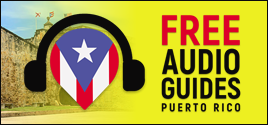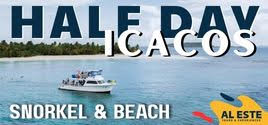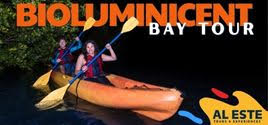Puerto Rican Coffee – From Bush to Bag to Cup
The coffee plantations (and all agriculture) were hit hard by Hurricane Maria. Farms are busy replanting. Some (like POmarrosa) have restarted tours…call and ask!

Here is another tidbit about us … we don’t drink coffee. But, this doesn’t stop us from growing some coffee bushes on our property and being interested in coffee production on the island. I have long been meaning to visit a working coffee plantation (usually called a Hacienda) but kind of felt odd about it, since we don’t drink coffee.
As luck would have it, my brother and sister-in-law enjoy coffee. So we took the day during their recent visit and did a tour of Hacienda Pomarrosa. It was educational and (so they tell me) very delicious!
As it turns out, the best Puerto Rican coffee comes from ripe beans grown high in the cool, moist mountain regions of the Toro Negro mountain range, toward the west. There are a number of coffee Haciendas in the towns of Jayuya, San Sebastian, Ponce, Adjuntas, Las Marias and Lares. It takes over 2 hours to drive to many of these places from the San Juan area, on some twisting, curving roads. So take your time, and plan on it being a full-day trip, or maybe even plan on an overnight stay in the area.
Most of larger coffee plantations are not open to the public, but some of the smaller, specialty/gourmet places are open for tours, and purchases. Our tour at the small, gourmet coffee plantation Hacienda Pomarrosa ( or Golden Roseapple Farm) was conducted by the owner, Kurt Legner. I will pass on some of the information we learned about coffee and then tell you about our tour.
Some History of Coffee (Around the World & in Puerto Rico)
Coffee is originally from Ethiopa (Africa). It was spread from that region by the Moors. Coffee was eventually brought to Puerto Rico in 1736, along with the slave labor required to work the fields. It was not a highly popular crop, and a number of hardships (both natural and man-made) made other crops more profitable. Over time, the quality of coffee became better and the world’s taste changed, making coffee a desirable crop.

Puerto Rico’s coffee production became a major economic boom for the island. But, mountain life was hard, picking the coffee is hard work, and jobs were easier in the cities. In more recent history, Puerto Rican businesses had to follow labor laws, and growing coffee became less profitable.
Today, much of the coffee crop goes unpicked because there are not enough workers willing to work in the fields. The island’s demand for coffee currently exceeds its production, which requires the importation of coffee beans (and, enevitably, coffee pests). These new pests are further reducing the production of coffee on the island.
Our Tour at Hacienda Pomarrosa
The tour started with a nice cup of coffee and some homemade banana bread in the outdoor gazebo. While we munched on the goodies, Kurt gave us the history of coffee, how he came to grow it as a business, and his take on current state of coffee production in Puerto Rico. Once we were ready, we headed to the fields (just a short walk).
Currently, he has about 3 acres of Arabica coffee plants in production and hopes to expand. He showed us fruit on the plants that were green (unripe) and red (ripe). He told us about the coffee borer, an insect that ruins the beans and how they are trying to control it. He discussed how difficult it is to hand pick the coffee (it grows on steep muddy hills and the bags weigh a lot). In Puerto Rico, the farms are required to pay at least minimum wage (which makes it hard to find workers, and cuts into the bottom line).

After the fields, we headed to the production area. The first stop was the separating area, where they separating the ripe from the unripe fruit, and pick out any debris. He can sell the unripe and imperfect fruit to the other coffee brands, who allow a large percentage of unripe beans in their products.
The red (ripe) fruits are then sent down the water shoot to the machine that removes the fruit from the bean. Then the beans are dried to specific humidity in a series of machines. Next, they are hulled (removing the bean from a natural coating).
At this point in the process, they are called "green coffee beans", and they can be stored in this state until they are needed. When an order comes in, they roast the beans, and then pack them right away.

After our tour of the production area, we headed back to the gazebo. Kurt made some expresso, and we sat and enjoyed the coffee, company, and cool weather.
NOTE: As it turns out, the best time to go on a coffee tour is during harvesting/processing time (which is October to December). During that time, you can see the whole production process from field to roaster. We went in April, so the bushes were just in flower, but Kurt took us around everywhere, and showed us all the equipment and the beans they had in the last stages of production.
Some Info About "Puerto Rican" Coffee
For years, I have been sending coffee to a friend in the States who loves Puerto Rican coffee (cafe). About 2 years ago, the brand she liked disappeared from store shelves and, after trying other brands, she told me she didn’t like the taste. I was wondering what happened.

It turns out that CC1 Limited Partnership, the parent company of Puerto Rico Coca-Cola Bottlers, purchased about 80% of the island’s coffee market. They produce most of the island’s various brands of "Puerto Rican" coffee, under the Puerto Rico Coffee Roasters LLC name.
Since Puerto Rico’s coffee demand exceeds local production, most of the beans that go into the regular brands of "Puerto Rican" coffee beans are imported from other countries to be blended with a certain percentage of Puerto Rican beans. Check the label before you buy the regular grade coffee products— unless it says 100% Puerto Rican coffee beans, it most probably isn’t 100% locally grown coffee.
I spent time at a couple supermarkets reading coffee bags. Many bags say 100% Pure or Hecho en Puerto Rico, but don’t be fooled. It seems that you need to do some work to get real Puerto Rican coffee — either go to a specialty store or a coffee Hacienda and purchase the gourmet coffees. Or, at least, really study the labels in the supermarket. There are still a few local growers (some have formed a co-op) that produce regular grade (but still tasty) 100% Puerto Rican coffee such as Cafe Cibales and Cafe Mami. The other thing: prices of regular grade coffee are controlled by the government , so as you pay more, quality (and taste) will go up also. Update 2017 The law has changed and they now have to say if beans are imported on the label)and there are more local brands coming to supermarkets, so just read the labels carefully!
Coffee Tours
In 2008, the Puerto Rico Tourism Company started promoting a Coffee Zone, where a number of the small gourmet haciendas open their places to the public. It is an effort to promote Agrotourism on the island.

Using the PRTC information, I called each of the Haciendas on the list to find the current (as of April 2011) information about tours. Some are free, some are low-priced, most offer coffee tastings, and all of them really hope you buy some of their coffee.
You need to call first for reservations and to ensure an English-speaking guide. You can drive yourselves, or if you don’t want to brave the roads, there are some tour companies that can make the arrangement and provide transportation.
Hacienda Pomarrosa in Ponce — This is the tour that we did, and we highly recommend it. Tours are by appointment only Tuesday- Saturday at 11am. $20/person. Allow 2 hours for the tour. They also have 2 cottages on the plantation for nightly rentals. Phone: 787-844-3541 or 787-460-8934 or 787-461-8493. Web: their webpage.
Hacienda Buena Vista in Ponce — This restored mid-19th century coffee plantation is owned by the Puerto Rico Conservation Trust. Guided tours are offered in Spanish and English. It’s more of a museum tour than a "plantation". We visited here years ago, and recommend it. You can read our review for more details and contact info.
Hacienda San Pedro in Jayuya — They offer 2 tours (12n & 2pm), on Saturdays and Sunday only with reservation . The tour of the facilities is $10/person and takes about 45 mins. Reservations are required, call Tel. 787-828-2083 Mondays to Fridays from 8:00am to 5:00pm. The have a coffee shop and little historical museum.
Hacienda Tres Picachos in Jayuya — They offer tours of the facilities with previous reservations Mondays- Saturdays from 9am-4pm. Call Tel. 787-332-4950. They also have a museum of antiques and artifacts. And restaurant and coffee shop open weekends.
Hacienda Tres Angeles in Adjuntas — Open only Friday-Sunday. They have a restaurant/coffee shop. Coffee Tours on Saturdays 10:00am by appointment only. Tours are about 30 mins. From field to cup (which tastings). Tour cost is $15.00 per person, kids up to 12 yo $5. Please call to reserve (787) 360-0019.
Hacienda Palma Escrita in Las Marias — MAY still offer tours..call them. They have a restaurant. They also have a gift shop/store and coffee! Phone: 787-210-8252
This next couple of places are not on the Puerto Rico Tourism Company "coffee tour" list, though they offer a tour …
Cafe Gran Batey in Utuado — Tour from bush to bag and then tasting! Free. Reservations not required, but preferred. Tour lasts approx 1-1½ hours. Phone: 787- 636-5442 or 787-608-1246. Web: www.cafegranbatey.com.
Hacienda La Mocha in Ponce — Offers a tour from field to machinery and tastings. Cost $15 pp. To make reservations: Phone:(787) 644-4469 or email: lamochaguesthouse@gmail.com Web: www.Haciendalamocha.com. They also have guestrooms on the property for rent.
The next couple places supposedly have their farms that are open to the public. They don’t have tours and are ore of a coffee shop and/or restaurant. I tried contacting them using the information provided by the Puerto Rico Tourism Company, but had no luck getting answers via phone/email. Maybe you will have better luck.
Hacienda Lareno in Lares. I hear there is no tour, but you can take pictures of the farm and buy coffee — 897-3643 or maybe 787-316-4939
Hacienda Lucero, in Ponce, 787-848-8387.
Hacienda Monte Alto in Adjuntas — Phone: 787-829-5353
Hacienda El Jibarito and Hacienda Gripinas are old coffee plantations that are now Paradores, which means they have been converted into small, basic hotels. Both were still closed after Hurricane Maria in May 2018 when I updated this article. You can try calling to see if they have reopened. El Jibarito (closed after Hurricane Maria) -in San Sebastian, 787-280-4040 and Gripinas (closed after hurricane Maria), in Juyuya, 787-828-1717.
Some other ideas for coffee lovers …
Museo del Cafe in Ciales — Located at 42 Palmer Street, this coffee museum roasts and sells fresh coffee. I believe the tour and all the information is only in Spanish, but you can call and see if they have a bi-lingual guide available 787-871-3439. Open Monday to Friday from 8am to 3pm, Saturday/Sunday 8am-5pm. Our review of the museum.
Coffee Tasting Class at Cuatro Sombras in Old San Juan. Our review of the class.
Coffee Festival in Maricao — Annual festival, usually the second weekend in February (but double check the dates to be sure).
Details For the Hacienda Pomarrosa Tour
The price of the tour is $20/person.
Tours are by appointment only Tuesday-Saturday at 11am and again at 1pm. Call, email them or use their webpage to make a reservation.
Note that it is cooler up in the mountains. It was 68°F the day we when, while it was 80°F in San Juan. You might want to bring a sweater. And you are walking in farm, closed toe shoes are recommended.
Allow about 2 hours for the tour.
You can call them at 787-844-3541, 787-460-8934 or 787-461-8493, for more information or to make a reservation.
You can visit the Hacienda Pomarrosa web site for more information or to purchase coffee.
Driving directions from the San Juan area: Take Route 52 toward Ponce. Exit onto Route 10 toward Adjuntas. Follow Route 10 to Route 143, where you’ll turn right. Follow Route 143 to Route 511, turn right. Follow Route 511 — Hacienda Pomarrosa will be on your left after you go around a curve.
Allow at least 2 hours for the drive from the San Juan area.
Click on a placename below to view the location on Google Maps ...
Puerto Rico Day Trips LLC assumes no responsibility regarding your safety when participating in the activities described in this article. Please use common sense! If your mother or that little voice in your head tells you that you are about to do something stupid … then don't do it!














